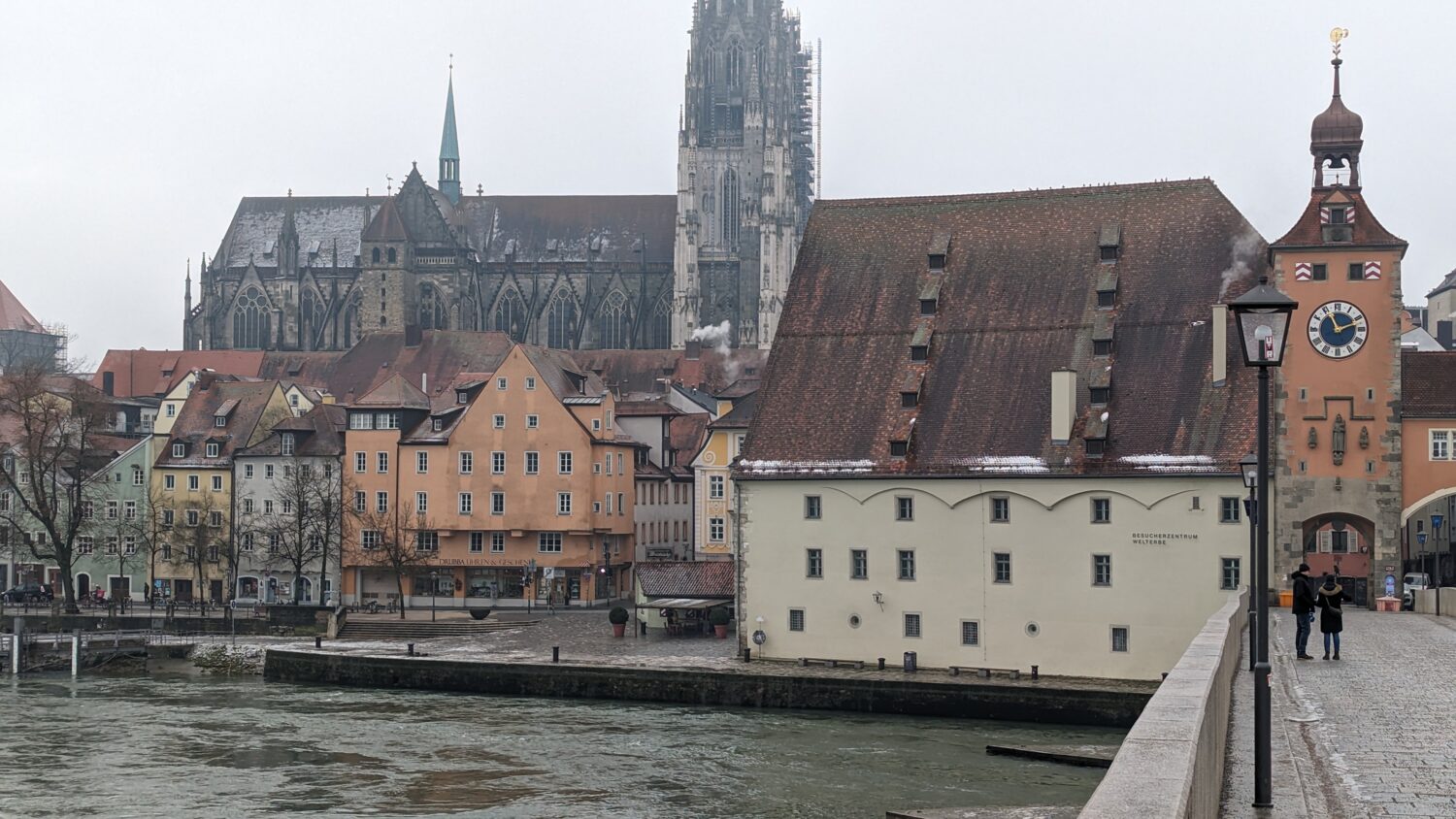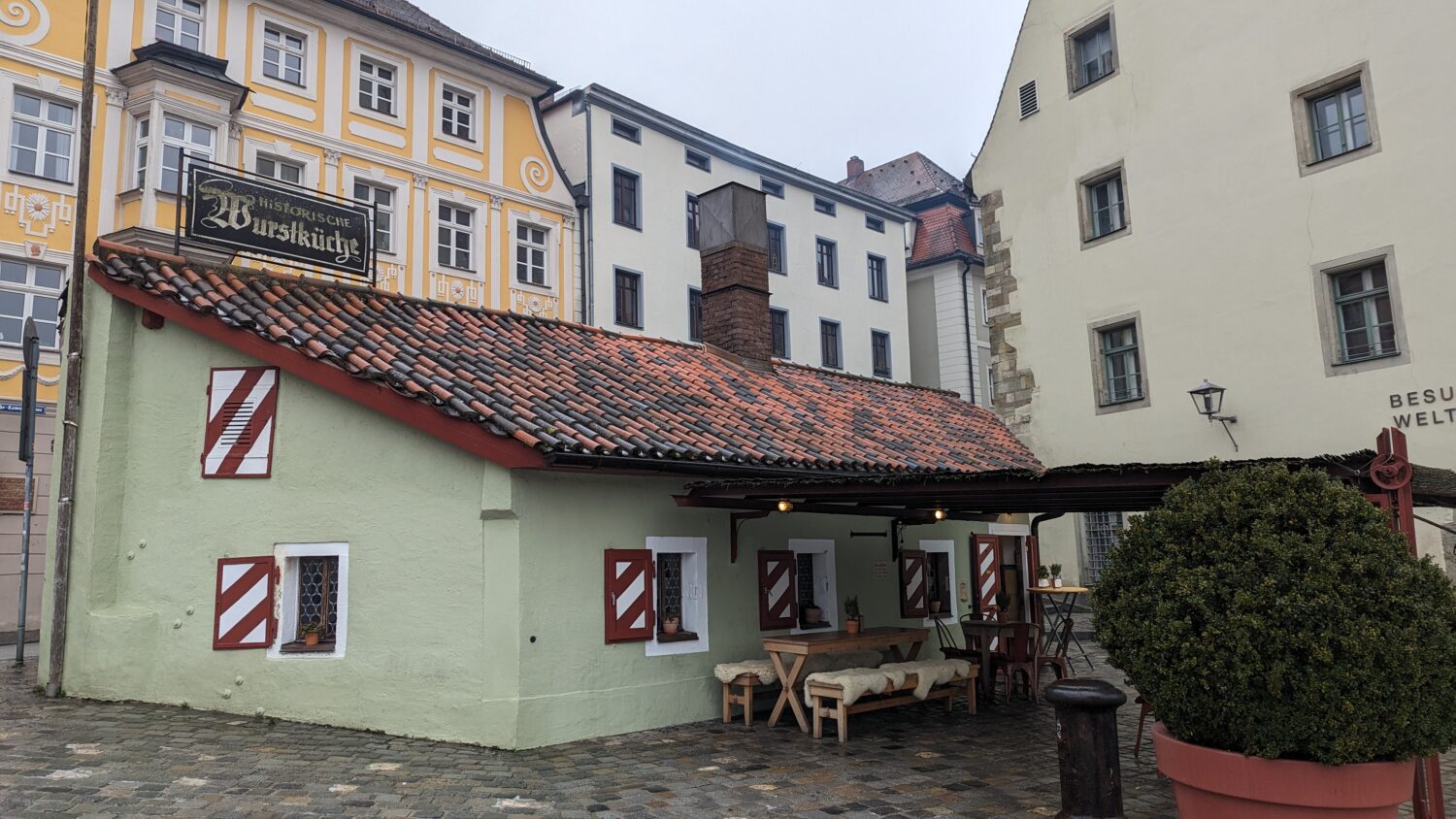Sausages, Sauerkraut, and Mustard: The Regensburg Lunch Unchanged in 200 Years
By Gavin Cleaver
The weight of tradition can be quite overwhelming for some restaurants. Trapped between evolving, capricious consumer tastes and preserving history, celebrated restaurants emblematic of a city or style can rapidly go out of fashion entirely, or travel in the other direction and in catering for change, alienate their regulars by changing too much.
There’s a restaurant, though, that’s been open for service since 1146, and has been serving exactly the same meal for over 200 years. Perched on the edge of the mighty Danube, Regensburg’s Historische Wurstkuchl (Historic Sausage Kitchen) was originally the foreman’s office for the building of the beautiful stone bridge which spans the river in the middle of the city. When the bridge was completed in 1146, the office remained open as a restaurant. If you want an idea of how long ago that might be, one year later the Second Crusade marched over the bridge on their way to the Holy Land. It’s not known if any of them grabbed a quick bite.

Obviously the building has been burned, rebuilt, and flooded several times since the mid 1100s, with both inside and out plastered with lines marking the high tide of floods over centuries, but a food business on the same footprint remains, in the same building since the 1600s, and it’s a lot more than a tourist curiosity. If you like restaurants with a small menu, then you’ll be in your element here: there is one starter, one main, and one side (as is often the case in Bavaria, dessert is schnapps). We can skip over the potato soup starter – possibly an ancient vegetarian alternative – for a main event that you may have deduced from the name of the restaurant.
These sausages are surprisingly thin and delicate, almost chipolata-esque, blackened from the open charcoal grill, and served on a bed of pungent, acidic sauerkraut which offers a deep, cut-through vinegar kick. The city of Regensburg is famous for its mustard, a prized sweet style that is regularly exported, and it goes so well with the pork and sauerkraut that you can see why this particular triangle of savoury joy has remained unbroken for so long. The sauerkraut is fermented in the cellars underneath the restaurant, the mustard is made in-house, and the sausages, with their little hint of rosemary, come from a secret Wurstkuchl recipe. It’s a seriously impressive combination that’s seemingly immune to the march of time (although it’s thought that before 1800 it was largely boiled or smoked meat that was sold here by a previous family of owners).

Inside, the restaurant is typically Germanic wood panels and old pictures, but outside is where you’ll find the real charm. Under fur-lined blankets, you can sit in front of the Wurstkuchl and watch the Danube go by through the almost millennia-old stone bridge, currents coursing around islands and multi-coloured houses in the middle of the river; it’s a view and a meal you might have shared with someone from the Middle Ages. Across from the Wurstkuchl is an old salt cellar, which now houses Regensburg’s UNESCO World Heritage site offices, offering tours of the city. When the salt cellar was renovated in the 1980s, they found the Wurstkuchl’s centuries-old waste pit during the excavations, one of the only ways that we have an idea what this restaurant might have been serving when Regensburg was the seat of the Holy Roman Empire.
It’s a stunning city, with impeccably preserved medieval buildings and winding cobbled alleys, palaces and cathedrals, churches and seats of empire. The Wurstkuchl, uninterested in the dinner crowd, closes at 4 or 5pm every day, but if after something a bit later you can walk five minutes up the road, past Regensburg’s intimidatingly huge cathedral, to Weltenburger am Dom, one of the finest Bavarian restaurants I’ve ever been to. Run by a monastery from just outside Regensburg, it has a schnitzel you have to taste to believe, a range of monastic ales, and, in an attempt at modernity, wurst wontons. Inside the wonton are sausage, sauerkraut, and mustard. You can package them anyway you like, but that combination of three foods is Bavaria’s heritage, and far from being a tourist trap, the Historiche Wurstkuchl serves one of the few meals in Europe that feels, in both ingredient and location, completely timeless.
The Wurstkuchl charges €13.50 for six sausages and €18 euros for 8. So that’s €2.25 a sausage, I think. No discount for bulk.
All photography by Gavin Cleaver.